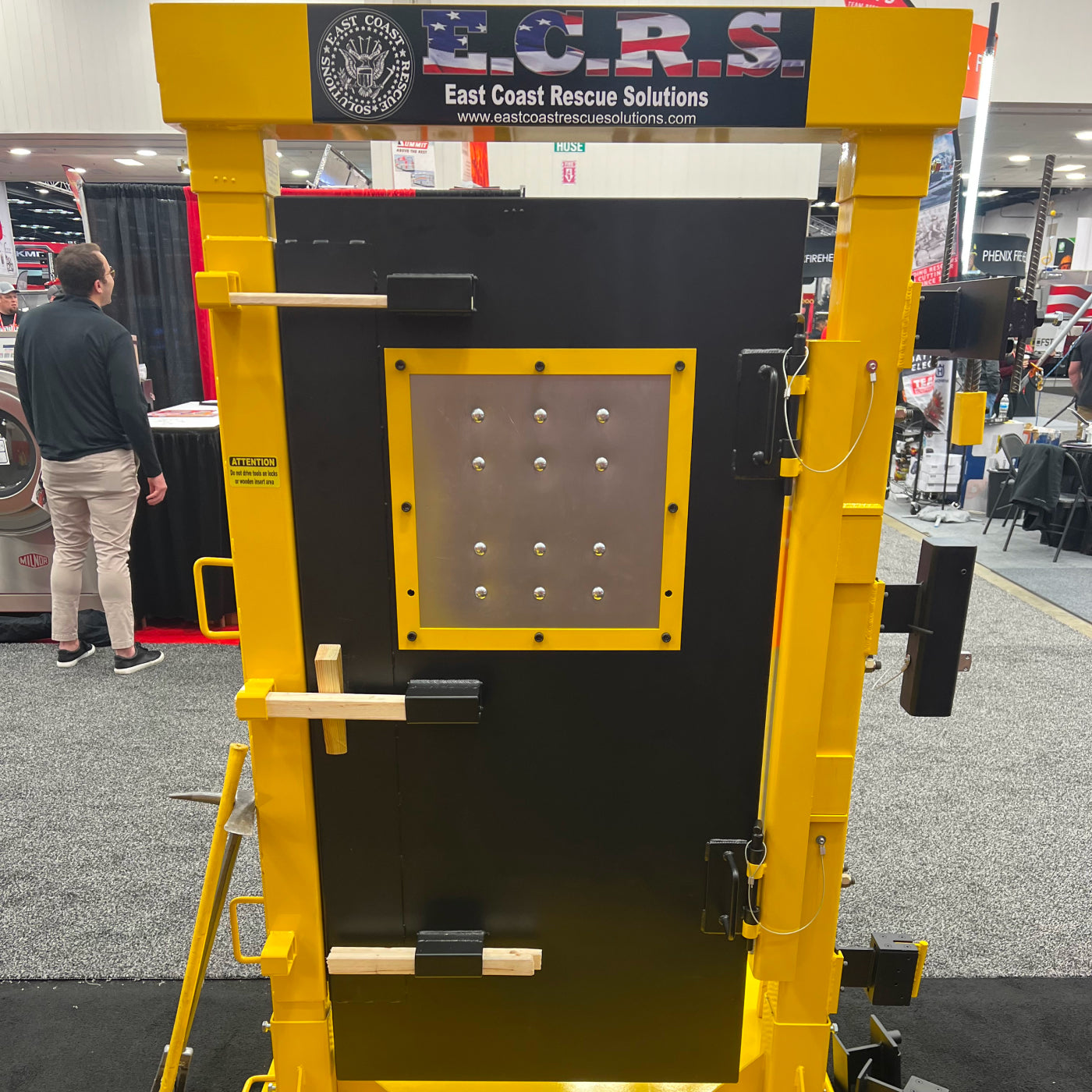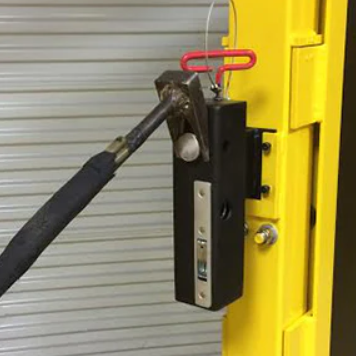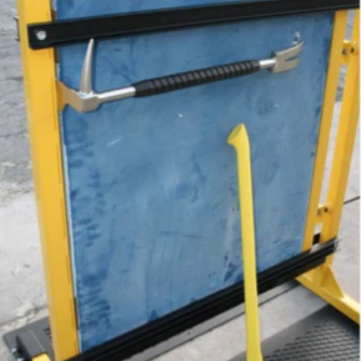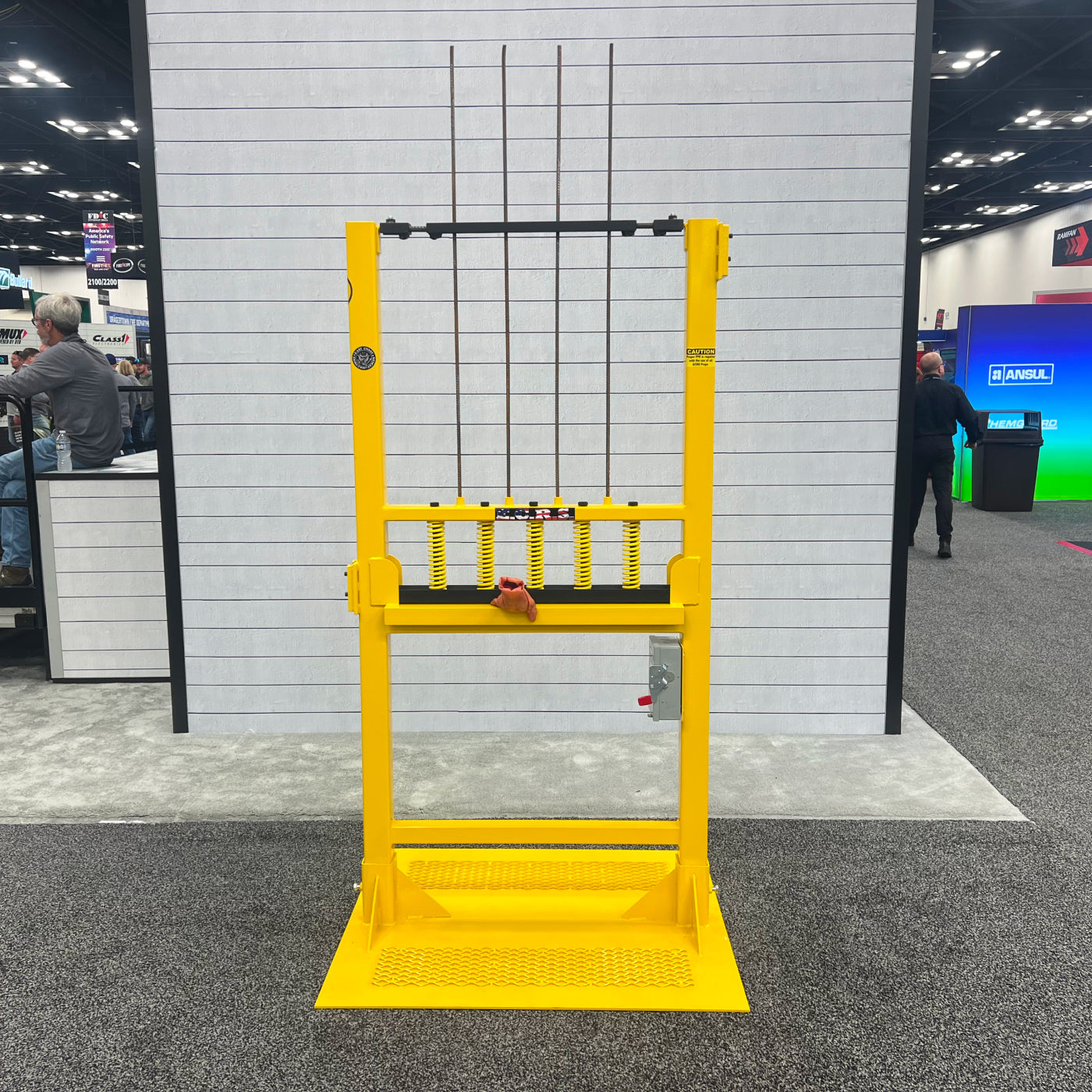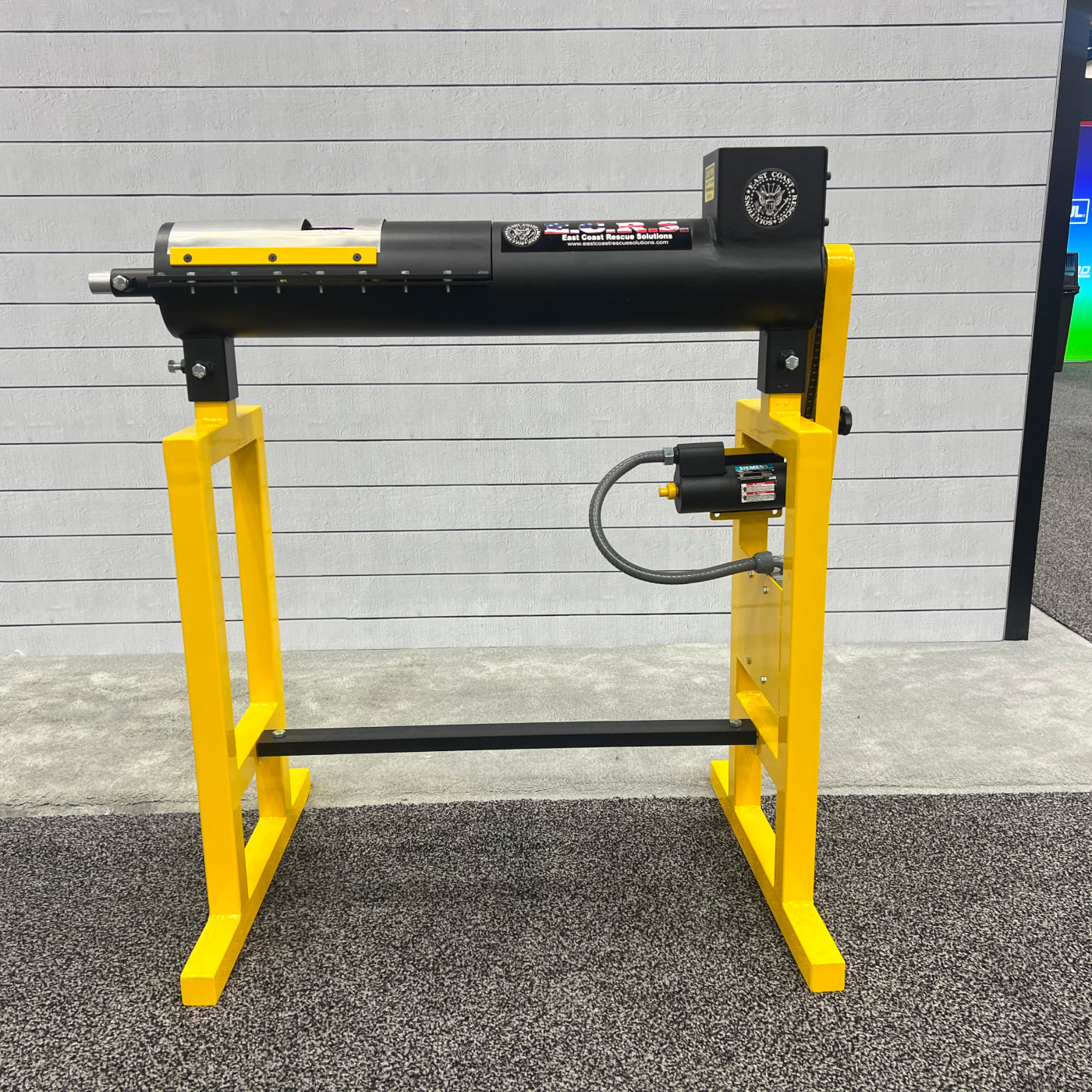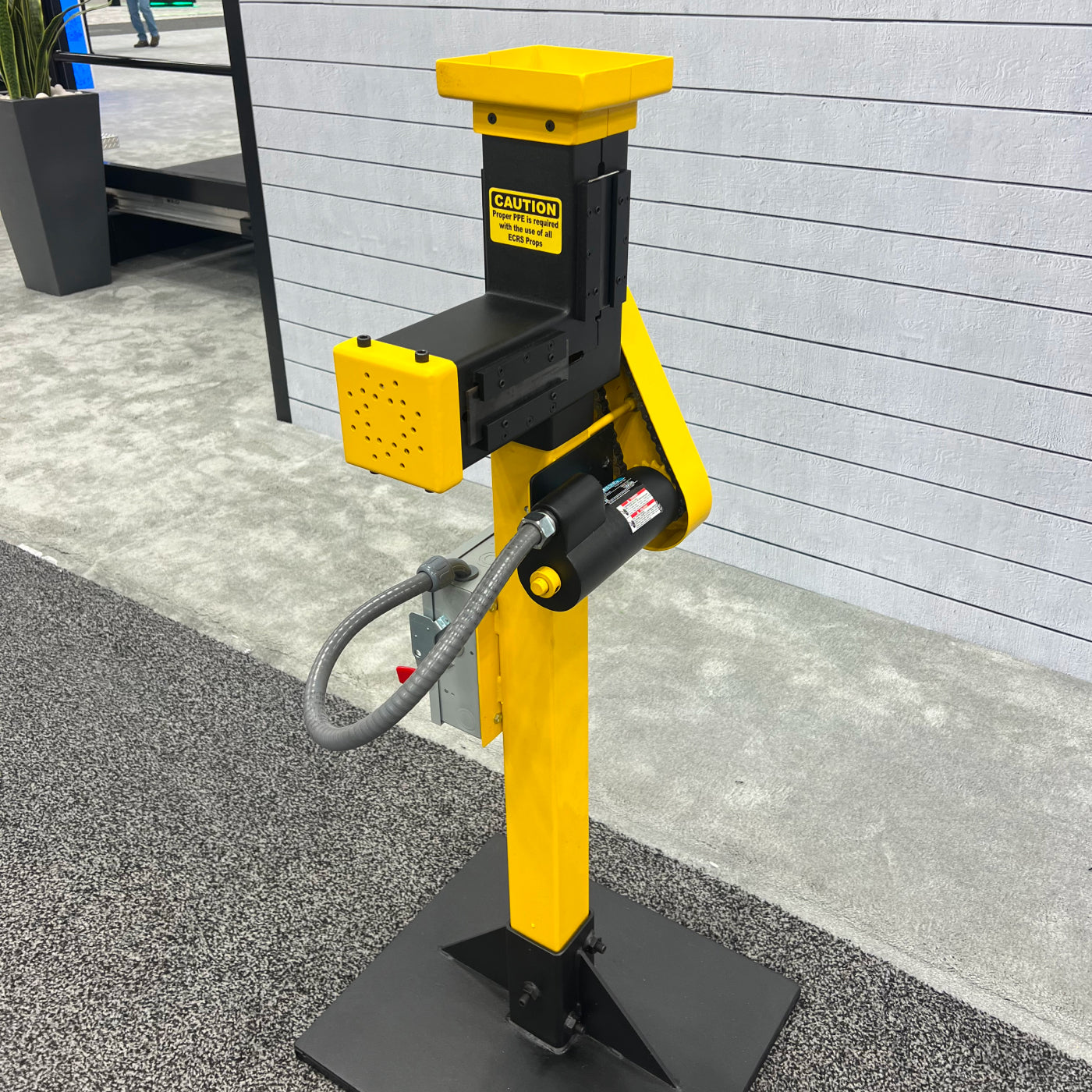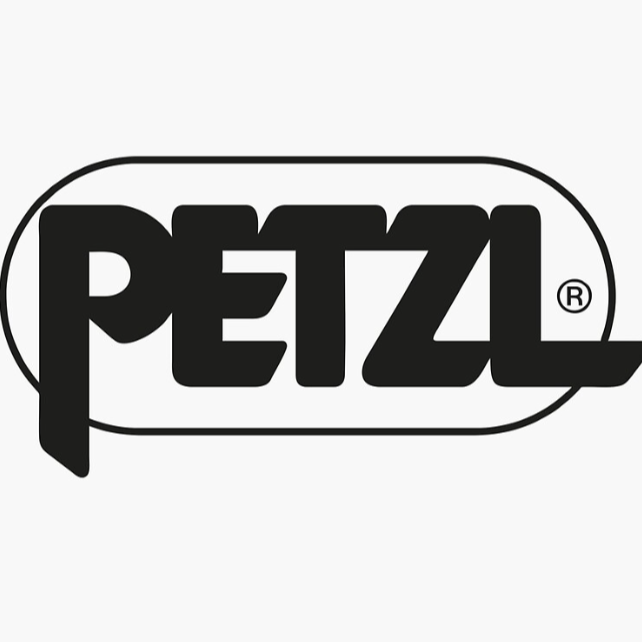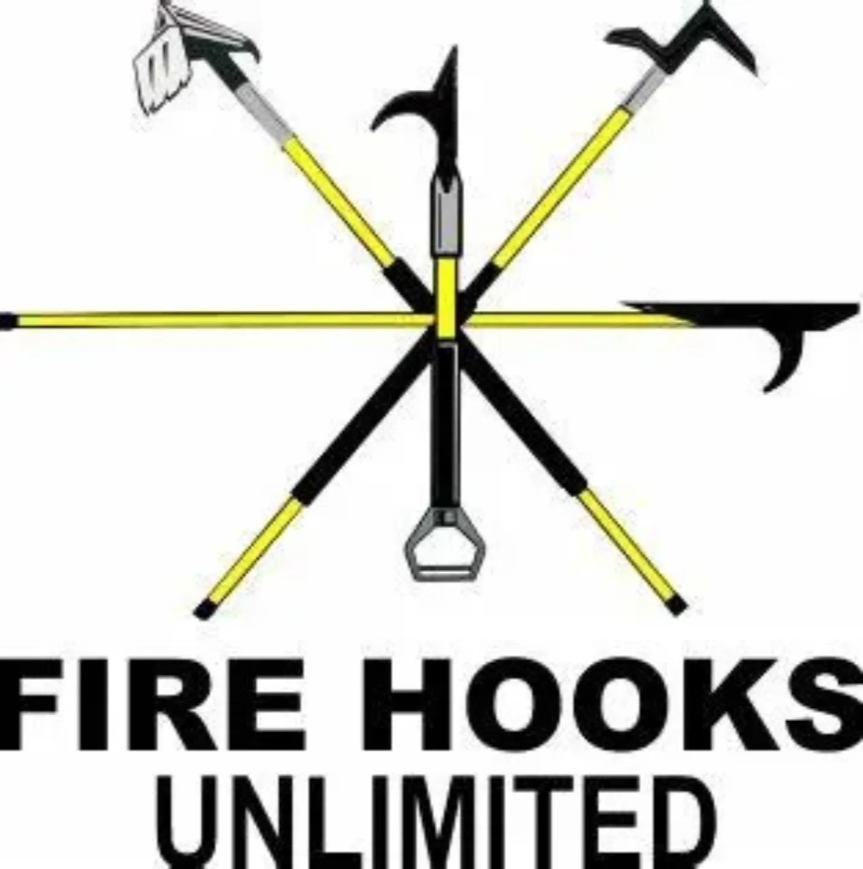As a firefighter, knowing how to execute forcible entry is critical, but not all doors and locks are created equal.
The techniques that work on residential homes might fail against a commercial building with reinforced barriers. If you don’t recognize these differences before you start your forcible entry process, you could end up wasting valuable time and energy.
In this guide, you’ll learn the key differences between residential and commercial structures and how to adjust your approach for each.
At East Coast Rescue Solutions, we train firefighters to handle both residential and commercial forcible entry using our Forcible Entry Door Simulator and a full range of forcible entry tools.
Structural and Material Differences
Understanding how residential and commercial buildings are constructed is the first step in making good entry decisions.
Residential Structures
-
Typically built with wood framing, drywall, and lightweight materials.
-
Doors are often hollow-core or solid wood, making them easier to breach.
-
Fire spread is faster due to open floor plans and combustible materials inside.
-
Fewer security reinforcements beyond standard deadbolts and locks.
Commercial Structures
-
Often constructed with steel, concrete, and reinforced materials.
-
Doors are heavier, frequently steel-clad or fire-rated.
-
Windows may be laminated, tempered, or reinforced with security bars.
-
Fire behavior is different due to fire-rated barriers, sprinkler systems, and higher fuel loads.
-
Advanced security features such as roll-down gates, keycard access, and reinforced locks are common.
Why It Matters: You need to adjust your tools and techniques based on these materials. A Halligan bar and axe might be all you need for a wood-framed residential, but a commercial steel door could require a maul, rotary saw or even hydraulic tools.
Door Construction & Locking Mechanisms
The first challenge in any forcible entry situation is getting through the door, but doors are not all the same.
Residential Doors
-
Often hollow-core or solid wood, with single deadbolts or knob locks.
-
Inward swinging doors are common for homes and apartments.
Commercial Doors
-
Typically steel or metal-clad, requiring more force or cutting.
-
Many have panic hardware, multiple deadbolts, or slide bolts
-
Outward swinging doors are more common due to fire code regulations.
-
Some have roll-down security gates or high-strength metal frames.
Key Takeaway: On residential doors, traditional prying methods with a Halligan and axe are often effective. But on commercial doors, cutting tools, rotary saws, or even hydraulic spreaders may be necessary.
Fire & Smoke Behavior Differences
Forcible entry is often needed to perform fire suppression and search & rescue but the way fire behaves in a home vs. a commercial building changes how you would approach entry.
Residential Fires
-
Fire spreads faster due to lightweight materials and open layouts.
-
Smoke conditions can deteriorate quickly in small spaces.
-
Ventilation is critical to prevent flashover.
Commercial Fires
-
Fire is more compartmentalized due to larger spaces and fire-rated walls.
-
May have sprinkler systems slowing fire spread.
-
Heavy fuel loads from storage, chemicals, or machinery can intensify fire conditions.
Why It Matters: In residential fires, you may need to force entry quickly and ventilate aggressively. In commercial buildings, forcing entry without considering ventilation can create dangerous backdraft conditions.
Security Measures & Challenges
Commercial buildings often have advanced security features that make forcible entry more challenging.
Residential Security
-
Most homes rely on basic locks, deadbolts, and alarm systems.
-
Some homes may have smart locks or security cameras.
-
Simple padlocks may be found on backyard gates or sheds.
Commercial Security
-
Reinforced doors with multiple locks, keycard access, and electronic security.
-
Security bars and roll-down shutters prevent easy window access.
-
Magnetic locks require power cuts or specialized techniques to bypass.
Best Approach: Always consider alternative entry points and use the right tool for the job. A bolt cutter might work for a residential padlock, but a commercial roll-down gate will require a saw or hydraulic tools.
Tools & Techniques for Residential vs. Commercial Forcible Entry
Having the right tools for the job makes all the difference. At East Coast Rescue Solutions, we provide training on both residential and commercial forcible entry techniques using our Forcible Entry Door Simulator.
Best Tools for Residential Entry:
-
Halligan bar & axe – Standard prying and striking combo for most homes.
-
Shove knife – Useful for bypassing simple latch locks.
-
Window punch – Quickly breaks glass for alternative entry.
Best Tools for Commercial Entry:
-
Rotary saw with carbide blade – Cuts through metal doors and security gates.
-
Hydraulic spreaders & cutters – Effective for high-security doors.
-
K-tool & A-tool – Through-the-lock entry for reinforced commercial locks.
Training & Hands-On Practice
Forcible entry is a skill that requires constant refinement. The best way to improve is through hands-on training with real tools and realistic obstacles.
At East Coast Rescue Solutions, we offer live training with our Forcible Entry Door Simulator, allowing you to:
-
Practice entry techniques for both residential and commercial doors.
-
Train with real forcible entry tools in realistic conditions.
-
Learn from experienced firefighters who’ve seen real-world entry challenges.
Conclusion
Whether you’re forcing entry into a burning home or a secured commercial property, recognizing the differences in structure, materials, and security features is essential. Using the right tools and techniques will make entry faster, safer, and more efficient.

